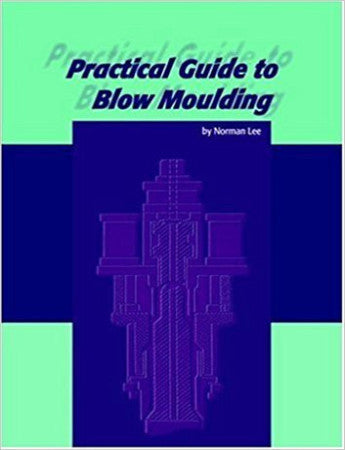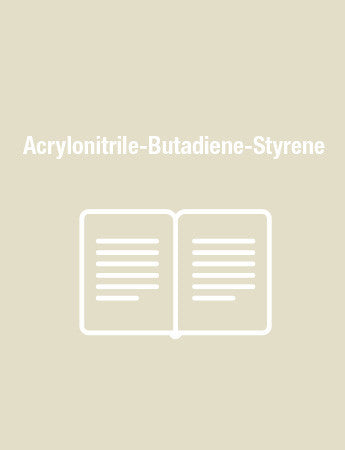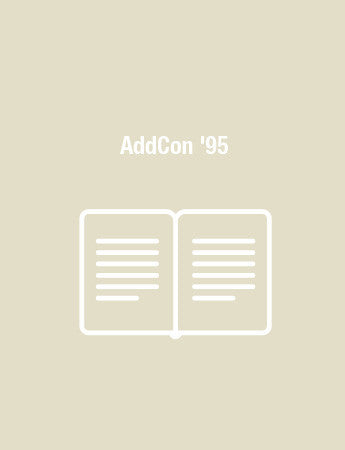Practical Guide to Blow Moulding
Blow moulding is a manufacturing process used to form hollow plastic parts. It evolved from the ancient art of glass blowing and it is used to particular advantage with plastic materials. Celluloid was used first to blow mould baby rattles and novelties in the 1930s, linear low-density polyethylene was used in the 1940s for high production bottles and these days polyethylene terephthalate is used to make anything from soda bottles to highly sophisticated multilayered containers and automotive fuel tanks in the last decade.
When designing a product it is important to consider aspects such as a material's characteristics, the processing methods available, the assembly and finishing procedures, and the life cycle and expected performance of the product. This book presents the basics of blow moulding as well as the latest state-of-the-art and science of the industry. A key feature is the approach of discussing the ‘basics’ and then taking the reader through the entire process from design development through to final production.
It is very important for those involved in the manufacturing operation to keep abreast of the advances that are being made. This book will be of interest to those already using the blow moulding process and those who are interested in the potential offered by this versatile technology.
When designing a product it is important to consider aspects such as a material's characteristics, the processing methods available, the assembly and finishing procedures, and the life cycle and expected performance of the product. This book presents the basics of blow moulding as well as the latest state-of-the-art and science of the industry. A key feature is the approach of discussing the ‘basics’ and then taking the reader through the entire process from design development through to final production.
It is very important for those involved in the manufacturing operation to keep abreast of the advances that are being made. This book will be of interest to those already using the blow moulding process and those who are interested in the potential offered by this versatile technology.
1 What is Blow Moulding?
1.1 Introduction
1.1.1 Definition
1.1.2 Basic Process
1.1.3 History and Development
1.2 Types of Blow Moulding
1.2.1 Introduction
1.2.2 Stretch Blow Moulding
1.2.3 Extrusion Blow Moulding
1.3 Material Considerations
1.3.1 Materials Selection
1.3.2 Product Properties and Market Usage
References
2 Design and Engineering
2.1 Design
2.1.1 Product Design and Development System
2.1.2 Process Management Tracking Systems
2.2 Basic Design
2.2.1 Basic Design Considerations
2.2.2 Bottle and Container Design
2.2.3 Structural Design
2.2.4 Design Details
2.3 Selection of Materials
2.3.1 Polymer Principles
2.3.2 Types of Polymers
2.3.3 Amorphous and Crystalline
2.3.4 Fundamental Properties
2.4 Characteristics For Blow Moulding
2.4.1 HDPE
2.4.2 Acrylonitrile Butadiene Styrene (ABS)
2.4.3 Polycarbonate (PC)
2.4.4 Polypropylene
2.4.5 Polyphenylene Oxide
2.5 Colouring Plastic Materials
2.6 Regrind
2.6.1 Re-grind Specifications
2.6.2 Process Performance
2.6.3 Physical Properties
2.7 Post Consumer and Industrial Recycled Materials
References
General Reading
3 Mould Design and Engineering
3.1 Main Characteristics of the Mould
3.2 Basic Design and Construction Considerations
3.2.1 Mould Materials
3.2.2 Selection of Materials
3.2.3 Characteristics of Mould Materials
3.3 Cut Mould versus Cast Moulds
3.3.1 Cast Aluminium Moulds
3.3.2 Cut Moulds
3.3.3 Cast and Cut Moulds
3.4 Importance of Fast Mould Cooling
3.4.1 Fast Heat Transfer Material Considerations
3.4.2 Manifolds
3.4.3 Control of Flash
3.4.4 Rate of Cooling
3.4.5 Remedies for Flash
3.5 The Pinch Off
3.5.1 Importance
3.6 High Quality, Undamaged Mould Cavity Finish
3.6.1 Mould Cavity Finish
3.7 Effects of Air and Moisture Trapped in the Mould
3.7.1 Polished Moulds
3.7.2 Moisture
3.8 Injection of the Blowing Air
3.8.1 Injection Blowing Air
3.8.2 Blowing Devices
3.9 Ejection of the Piece from the Mould
3.9.1 Ejection Methods
3.9.2 Manual Ejection
3.9.3 Automatic Ejection
3.9.4 Hydraulic Systems
3.10 Pre-Pinch Bars
3.10.1 Top Pinch
3.10.2 Bottom Pinch
3.11 Bottle Moulds
3.11.1 Neck Ring and Blow Pin Design
3.12 Dome Systems
3.12.1 Dome Blow Pin
3.12.2 Trimming Types
3.13 Pre-Finished System
3.13.1 Pre-Finished Neck Rings
3.14 Unusual Problems
3.14.1 Special Features
3.14.2 Irregular Shaped Parts
3.15 Computer Aided Design and Engineering for Mould Making
3.15.1 Application in Mould Making
3.15.2 Systems and Methods
3.16 General Mould Buying Practices
3.16.1 Mould Procurement
3.16.2 Request for Quotation
3.17 Mould Maintenance Program
3.17.1 The Moulds Used to Produce Polyvinyl Chloride (PVC) and Polyethylene Terephthalate
3.17.2 Moulds for PE
3.17.3 Mould Cooling Lines
3.17.4 Guide Pins and Bushings
3.17.5 Striker Plates and Blow Pin Plates
3.17.6 Pinch off
3.17.7 Shut Down
Acknowledgements
References
Further Reading
4 The Extrusion Blow Moulding System
4.1 Extruder
4.2 Drive
4.2.1 Motors
4.3 Gear Box
4.4 Screw Support Bearings
4.4.1 Life of Thrust Bearings
4.5 Extruder Feed
4.5.1 Feed
4.6 Hopper
4.6.2 Feed Throat
4.7 Single-Screw Extruder
4.7.1 Barrel Construction
4.7.2 Zone Heating
4.7.3 Venting
4.7.4 Wear Resistant Barrels
4.7.5 Grooved Barrels
4.7.6 Pressure Generation
4.8 Melt Filtration
4.9 The Screw
4.9.1 General-Purpose Screw
4.9.2 Screw Zones
4.9.3 Dedicated Screws
4.9.4 Barrier Screws
4.9.5 Wear-Resistant Screws
4.9.6 Mixing Pins and Sections
4.9.7 Distributive and Dispersive Mixing
4.10 The Extrusion Blow Moulding Head and Die Unit
4.10.1 Centre-Feed Die
4.10.2 Side-Feed Dies
4.10.3 Wall Thickness
4.10.4 Accumulator Head
4.10.5 Die and Mandrel
4.10.6 Die Swell
4.10.7 Parison Adjustment
4.10.8 Die Shaping
4.10.9 Parison Programming
4.10.10 Blow-up Ratio
4.11 Mould Clamping Systems
4.11.2 Clamping System Requirements
4.11.3 Clamp Operation
4.11.4 Press Types
5 Extrusion Blow Moulding Advanced Systems
5.1 Co-Extrusion Blow Moulding
5.1.1 Arrangement of Extruders for Co-Extrusion
5.1.2 Multi-Layered Structures
5.1.3 Co-Extrusion Systems
5.2 Three-Dimensional Blow Moulding
5.2.1 Introduction to 3-D
5.2.2 3-D Extrusion Processes
5.2.3 Suction Blow Moulding
5.2.4 Parison Manipulation
5.2.5 3-D Extrusion Systems
5.2.6 Head Adapter Radial Wall System
5.3 Double Walled Parts and Containers
6 Injection and Stretch Blow Moulding Machines
6.1 Introduction
6.1.1 Injection Moulding Process
6.2 Process Characteristics
6.2.1 One step Machine
6.2.2 Two Step Process
6.2.3 Moulding Process
6.3 Tooling
6.3.1 Introduction
6.4 Stretch Blow Moulding
6.4.1 Introduction
References
7 Safe and Efficient Set-up, Start-up, Operation, Shutdown Procedures and Safety
7.1 Start-up
7.1.1 Start-Up Preparations
7.1.2 Melt Temperature
7.1.3 Warming up an Empty Machine
7.1.4 Warming up a Full Machine
7.1.5 Initial Operation and Purging
7.1.6 Commencing Moulding – Manual Operation
7.1.7 Commencing Moulding – Automatic Operation
7.1.8 Changing Conditions and Dimension Verification
7.1.9 Recording Production Conditions
7.2 Safety in Normal Machine Operation
7.2.1 Operation
7.2.2 Safety Considerations
7.3 Shutting Down
7.3.1 Temporary Stops
7.3.2 Overnight Stops
7.3.3 High Temperature Work
7.3.4 Heat-Sensitive Materials
7.3.5 Purge Materials
7.3.6 Shutting Down an Injection Blow Moulding Machine
7.3.7 Check Recommendations
References
8 Fault Finding – Causes and Effects
8.1 Introduction
8.2 Troubleshooting
8.3 Brainstorming
8.4 Problems and Causes
8.4.1 Background Sounds of the Plant
8.4.2 Quality Problems
8.4.3 Machine and Equipment Problems
8.4.4 Importance of Consistent Material
8.4.5 Process Settings
8.4.6 Ambient Conditions
8.5 Preventive and Corrective Actions
8.5.1 Corrective Actions
8.5.2 Corrective-Action Team
8.5.3 Root Cause
8.6 Packaging
8.7 Scrap
8.7.1 Contaminated Material
8.7.2 Reworked Parts
9 Auxiliary Equipment: Design, Function, Operation, and Safety
9.1 Bulk Material Handling Systems
9.2 Dryer
9.2.1 Hot Air Dryers
9.2.2 Dryer Operation
9.2.3 Dryer Safety
9.3 Blenders and Metering Equipment (Feeders)
9.3.1 A Volumetric Blender
9.3.2 Gravimetric Systems
9.3.3 Metering and Blending Equipment
9.3.4 Machine Operation
9.4 Machine Safety
9.5 Hopper Loader
9.5.1 Loader Operation
9.6 Water Temperature Controllers
9.6.1 Operation
9.7 In-line Inspection and Testing Equipment
9.7.1 Laser Measurement
9.7.2 Ultrasonic Testing
9.7.3 Vision Systems
9.7.4 Mechanical
9.8 Conveyors
9.9 Granulators
9.10 Safety
10 Finishing
10.1 Planning for the Finishing of a Blow Moulded Part
10.1.1 Product Design
10.1.2 Mould Engineering
10.1.3 Process Planning
10.2 Removing Domes and Other Sections
10.3 Flash Removal
10.3.1 The Cutting Machine – Round Parts versus Parts with Corners
11 Decoration of Blow Moulded Products
11.1 Testing Surface Treated Parts
11.2 Spray Painting
11.3 Screen Printing
11.4 Hot Stamping
11.5 Pad Printing
11.6 Labels and Decals
12 Glossary
1.1 Introduction
1.1.1 Definition
1.1.2 Basic Process
1.1.3 History and Development
1.2 Types of Blow Moulding
1.2.1 Introduction
1.2.2 Stretch Blow Moulding
1.2.3 Extrusion Blow Moulding
1.3 Material Considerations
1.3.1 Materials Selection
1.3.2 Product Properties and Market Usage
References
2 Design and Engineering
2.1 Design
2.1.1 Product Design and Development System
2.1.2 Process Management Tracking Systems
2.2 Basic Design
2.2.1 Basic Design Considerations
2.2.2 Bottle and Container Design
2.2.3 Structural Design
2.2.4 Design Details
2.3 Selection of Materials
2.3.1 Polymer Principles
2.3.2 Types of Polymers
2.3.3 Amorphous and Crystalline
2.3.4 Fundamental Properties
2.4 Characteristics For Blow Moulding
2.4.1 HDPE
2.4.2 Acrylonitrile Butadiene Styrene (ABS)
2.4.3 Polycarbonate (PC)
2.4.4 Polypropylene
2.4.5 Polyphenylene Oxide
2.5 Colouring Plastic Materials
2.6 Regrind
2.6.1 Re-grind Specifications
2.6.2 Process Performance
2.6.3 Physical Properties
2.7 Post Consumer and Industrial Recycled Materials
References
General Reading
3 Mould Design and Engineering
3.1 Main Characteristics of the Mould
3.2 Basic Design and Construction Considerations
3.2.1 Mould Materials
3.2.2 Selection of Materials
3.2.3 Characteristics of Mould Materials
3.3 Cut Mould versus Cast Moulds
3.3.1 Cast Aluminium Moulds
3.3.2 Cut Moulds
3.3.3 Cast and Cut Moulds
3.4 Importance of Fast Mould Cooling
3.4.1 Fast Heat Transfer Material Considerations
3.4.2 Manifolds
3.4.3 Control of Flash
3.4.4 Rate of Cooling
3.4.5 Remedies for Flash
3.5 The Pinch Off
3.5.1 Importance
3.6 High Quality, Undamaged Mould Cavity Finish
3.6.1 Mould Cavity Finish
3.7 Effects of Air and Moisture Trapped in the Mould
3.7.1 Polished Moulds
3.7.2 Moisture
3.8 Injection of the Blowing Air
3.8.1 Injection Blowing Air
3.8.2 Blowing Devices
3.9 Ejection of the Piece from the Mould
3.9.1 Ejection Methods
3.9.2 Manual Ejection
3.9.3 Automatic Ejection
3.9.4 Hydraulic Systems
3.10 Pre-Pinch Bars
3.10.1 Top Pinch
3.10.2 Bottom Pinch
3.11 Bottle Moulds
3.11.1 Neck Ring and Blow Pin Design
3.12 Dome Systems
3.12.1 Dome Blow Pin
3.12.2 Trimming Types
3.13 Pre-Finished System
3.13.1 Pre-Finished Neck Rings
3.14 Unusual Problems
3.14.1 Special Features
3.14.2 Irregular Shaped Parts
3.15 Computer Aided Design and Engineering for Mould Making
3.15.1 Application in Mould Making
3.15.2 Systems and Methods
3.16 General Mould Buying Practices
3.16.1 Mould Procurement
3.16.2 Request for Quotation
3.17 Mould Maintenance Program
3.17.1 The Moulds Used to Produce Polyvinyl Chloride (PVC) and Polyethylene Terephthalate
3.17.2 Moulds for PE
3.17.3 Mould Cooling Lines
3.17.4 Guide Pins and Bushings
3.17.5 Striker Plates and Blow Pin Plates
3.17.6 Pinch off
3.17.7 Shut Down
Acknowledgements
References
Further Reading
4 The Extrusion Blow Moulding System
4.1 Extruder
4.2 Drive
4.2.1 Motors
4.3 Gear Box
4.4 Screw Support Bearings
4.4.1 Life of Thrust Bearings
4.5 Extruder Feed
4.5.1 Feed
4.6 Hopper
4.6.2 Feed Throat
4.7 Single-Screw Extruder
4.7.1 Barrel Construction
4.7.2 Zone Heating
4.7.3 Venting
4.7.4 Wear Resistant Barrels
4.7.5 Grooved Barrels
4.7.6 Pressure Generation
4.8 Melt Filtration
4.9 The Screw
4.9.1 General-Purpose Screw
4.9.2 Screw Zones
4.9.3 Dedicated Screws
4.9.4 Barrier Screws
4.9.5 Wear-Resistant Screws
4.9.6 Mixing Pins and Sections
4.9.7 Distributive and Dispersive Mixing
4.10 The Extrusion Blow Moulding Head and Die Unit
4.10.1 Centre-Feed Die
4.10.2 Side-Feed Dies
4.10.3 Wall Thickness
4.10.4 Accumulator Head
4.10.5 Die and Mandrel
4.10.6 Die Swell
4.10.7 Parison Adjustment
4.10.8 Die Shaping
4.10.9 Parison Programming
4.10.10 Blow-up Ratio
4.11 Mould Clamping Systems
4.11.2 Clamping System Requirements
4.11.3 Clamp Operation
4.11.4 Press Types
5 Extrusion Blow Moulding Advanced Systems
5.1 Co-Extrusion Blow Moulding
5.1.1 Arrangement of Extruders for Co-Extrusion
5.1.2 Multi-Layered Structures
5.1.3 Co-Extrusion Systems
5.2 Three-Dimensional Blow Moulding
5.2.1 Introduction to 3-D
5.2.2 3-D Extrusion Processes
5.2.3 Suction Blow Moulding
5.2.4 Parison Manipulation
5.2.5 3-D Extrusion Systems
5.2.6 Head Adapter Radial Wall System
5.3 Double Walled Parts and Containers
6 Injection and Stretch Blow Moulding Machines
6.1 Introduction
6.1.1 Injection Moulding Process
6.2 Process Characteristics
6.2.1 One step Machine
6.2.2 Two Step Process
6.2.3 Moulding Process
6.3 Tooling
6.3.1 Introduction
6.4 Stretch Blow Moulding
6.4.1 Introduction
References
7 Safe and Efficient Set-up, Start-up, Operation, Shutdown Procedures and Safety
7.1 Start-up
7.1.1 Start-Up Preparations
7.1.2 Melt Temperature
7.1.3 Warming up an Empty Machine
7.1.4 Warming up a Full Machine
7.1.5 Initial Operation and Purging
7.1.6 Commencing Moulding – Manual Operation
7.1.7 Commencing Moulding – Automatic Operation
7.1.8 Changing Conditions and Dimension Verification
7.1.9 Recording Production Conditions
7.2 Safety in Normal Machine Operation
7.2.1 Operation
7.2.2 Safety Considerations
7.3 Shutting Down
7.3.1 Temporary Stops
7.3.2 Overnight Stops
7.3.3 High Temperature Work
7.3.4 Heat-Sensitive Materials
7.3.5 Purge Materials
7.3.6 Shutting Down an Injection Blow Moulding Machine
7.3.7 Check Recommendations
References
8 Fault Finding – Causes and Effects
8.1 Introduction
8.2 Troubleshooting
8.3 Brainstorming
8.4 Problems and Causes
8.4.1 Background Sounds of the Plant
8.4.2 Quality Problems
8.4.3 Machine and Equipment Problems
8.4.4 Importance of Consistent Material
8.4.5 Process Settings
8.4.6 Ambient Conditions
8.5 Preventive and Corrective Actions
8.5.1 Corrective Actions
8.5.2 Corrective-Action Team
8.5.3 Root Cause
8.6 Packaging
8.7 Scrap
8.7.1 Contaminated Material
8.7.2 Reworked Parts
9 Auxiliary Equipment: Design, Function, Operation, and Safety
9.1 Bulk Material Handling Systems
9.2 Dryer
9.2.1 Hot Air Dryers
9.2.2 Dryer Operation
9.2.3 Dryer Safety
9.3 Blenders and Metering Equipment (Feeders)
9.3.1 A Volumetric Blender
9.3.2 Gravimetric Systems
9.3.3 Metering and Blending Equipment
9.3.4 Machine Operation
9.4 Machine Safety
9.5 Hopper Loader
9.5.1 Loader Operation
9.6 Water Temperature Controllers
9.6.1 Operation
9.7 In-line Inspection and Testing Equipment
9.7.1 Laser Measurement
9.7.2 Ultrasonic Testing
9.7.3 Vision Systems
9.7.4 Mechanical
9.8 Conveyors
9.9 Granulators
9.10 Safety
10 Finishing
10.1 Planning for the Finishing of a Blow Moulded Part
10.1.1 Product Design
10.1.2 Mould Engineering
10.1.3 Process Planning
10.2 Removing Domes and Other Sections
10.3 Flash Removal
10.3.1 The Cutting Machine – Round Parts versus Parts with Corners
11 Decoration of Blow Moulded Products
11.1 Testing Surface Treated Parts
11.2 Spray Painting
11.3 Screen Printing
11.4 Hot Stamping
11.5 Pad Printing
11.6 Labels and Decals
12 Glossary
Norman Lee has held various positions in the plastics industry in product and process design and development, in a career of over forty years culminating as Vice President of Research and Development with Zarn, Inc., USA. He has been active in the SPE in the Plastic Environmental (Recycling), Blow Molding and Product Development Divisions. He has written several technical reference books and been granted 20 patents in the field of blow moulding. Mr. Lee is now directing his own consulting services, offering seminars and in-plant training programs for the blow moulding industry and conducting expert witness work.




